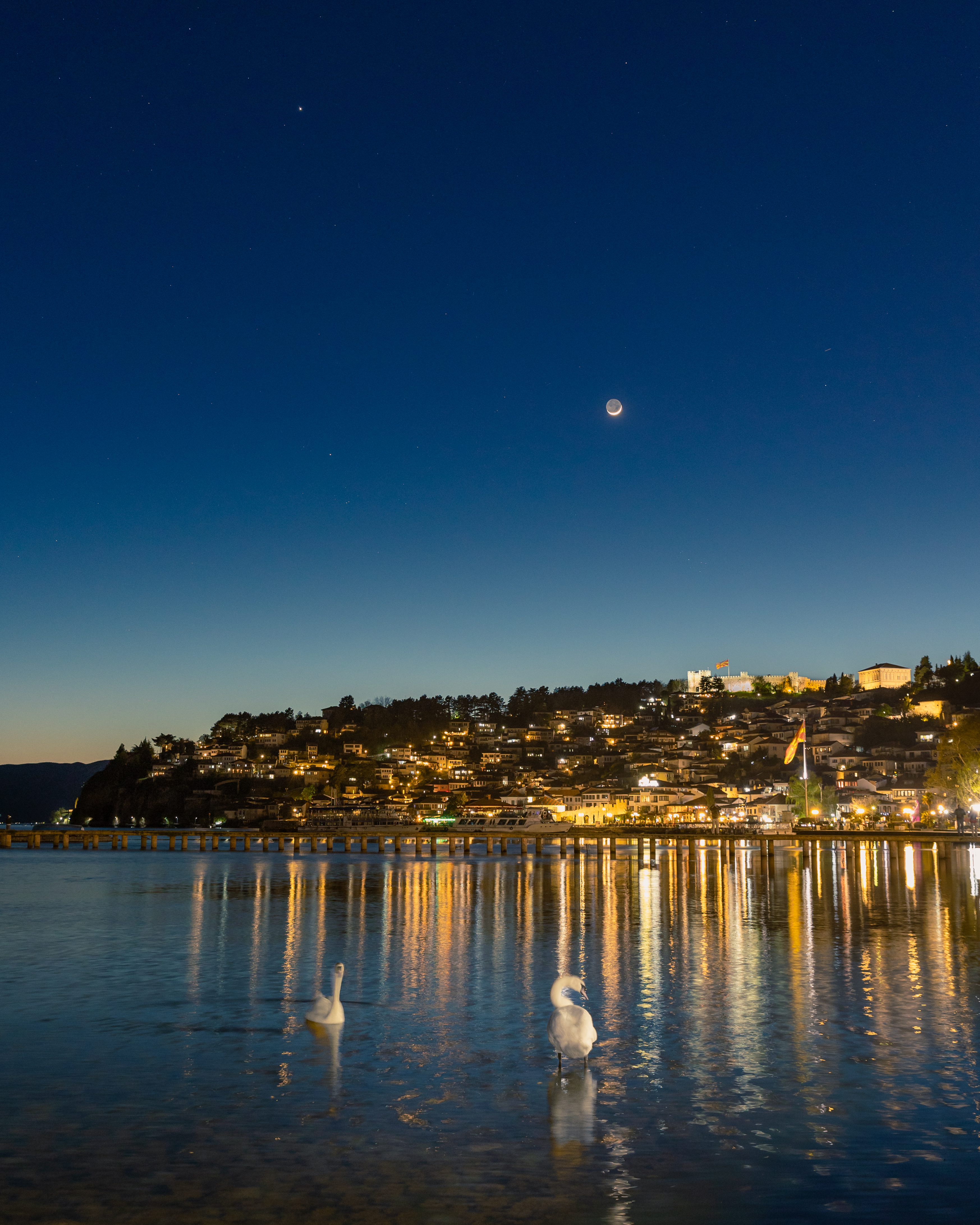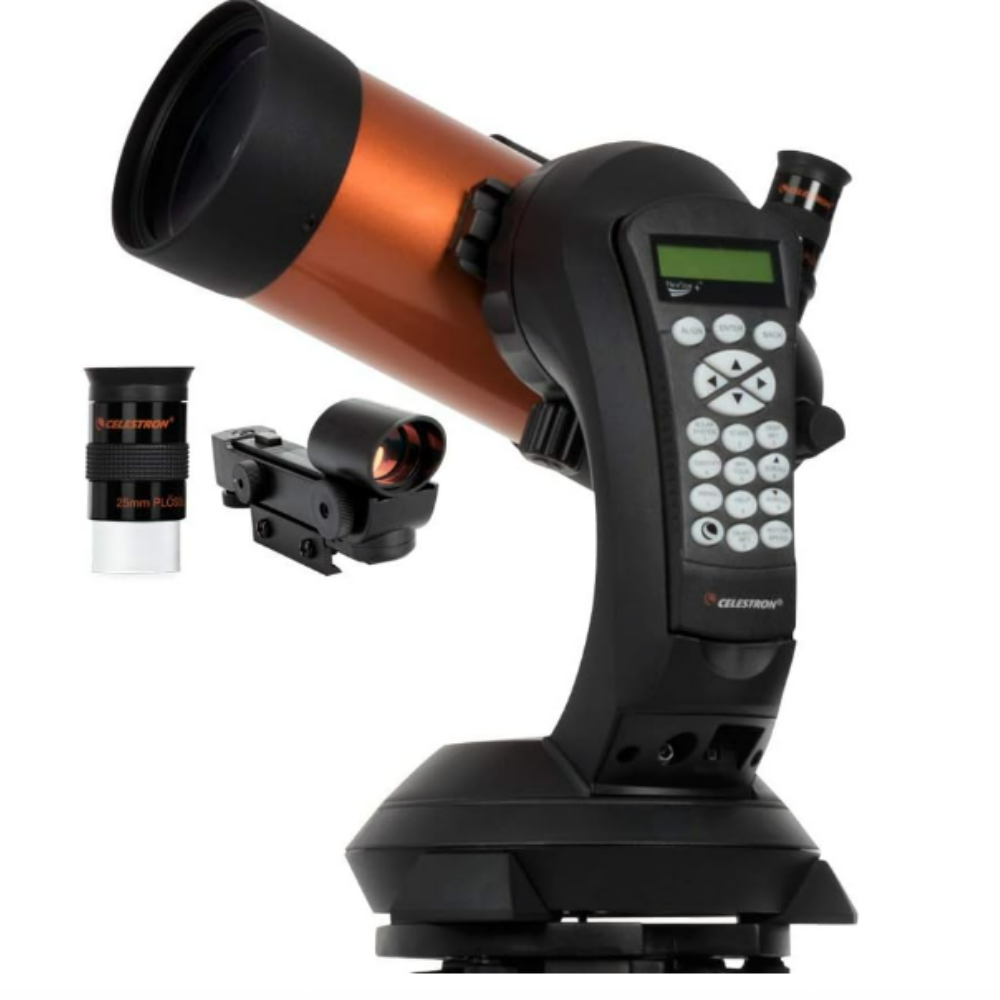
Photographer Riste Spiroski snapped a striking view of the moon and Jupiter hanging over the ancient lake Ohrid in northern Macedonia on the night of April 29, complete with a pair of stargazing swans!
Spiroski took the shot of the moon and the solar system's largest planet at 7:45 p.m. local time using a Canon R6 camera in conjunction with a Canon EF 24–70mm f/2.8 lens. The image was captured during a period known to photographers as the 'blue hour', which stargazing site EarthSky.org describes as a brief window of post sunset twilight when the landscape is bathed in soft blue light.
"This image was captured during a spontaneous walk with a friend," Spiroski said in an email to Space.com. "We headed out around blue hour, hoping to shoot some long exposure shots by the shore of Lake Ohrid. As the sun was setting below the horizon, I spotted the thin crescent moon beginning to set - it was very beautiful. I quickly opened an astronomy app to check what else might be visible, and noticed Jupiter would soon be appearing low on the horizon."
TOP TELESCOPE PICK:

Want to explore the solar system? The Celestron NexStar 4SE is ideal for beginners wanting quality, reliable and quick views of celestial objects. For a more in-depth look at our Celestron NexStar 4SE review.
To capture the low-light scene, Spiroski raised his ISO to 1000 and set the lens aperture to f/6.3, before snapping a 1.6 second exposure. The result is a mesmerising blend of astronomy, nature and humanity, in which the city of Ohrid casts streaks of light over a pair of white swans basking in the placid lake. Lake Ohrid sits on the border between North Macedonia and Albania, and is estimated to be somewhere between 3 and 5 million years old, according to NASA.
"As the sky turned that deep blue, everything came together - the crescent moon, Jupiter, and the calm water of Lake Ohrid, which is actually Europe's oldest lake," continued Spiroski. "I love mixing sky elements with landscapes, and Ohrid always gives me something beautiful to work with."
Earth's moon is visible hanging above the scene as a waxing crescent, with the unlit regions of its surface softly illuminated by Earthshine. Three stellar bodies belonging to the Perseus constellation can also be picked out shining to the right of the image, while the bright star Hassaleh can be found directly above the moon near the top of the image.
Jupiter meanwhile is visible as a bright point of light to the upper left of the photo, with the magnitude +1 star Aldebaran located below the gas giant, and to the left of the moon, forming a triangle of bright celestial bodies.
Interested in capturing your own image of the night sky? Then be sure to check out our guides on the best cameras for astrophotography and the best lenses for astrophotography.
Night sky enthusiasts looking to explore the wonders of our solar system and beyond should also read guides for the best binoculars deals and the best telescope deals that 2025 has to offer.
.png)
 German (DE)
German (DE)  English (US)
English (US)  Spanish (ES)
Spanish (ES)  French (FR)
French (FR)  Hindi (IN)
Hindi (IN)  Italian (IT)
Italian (IT)  Russian (RU)
Russian (RU) 








Comments